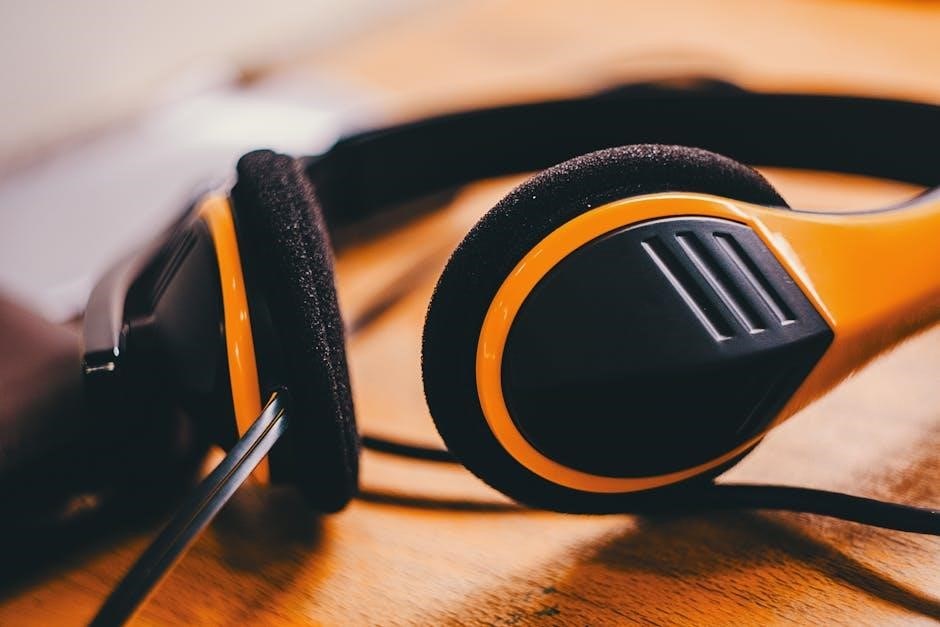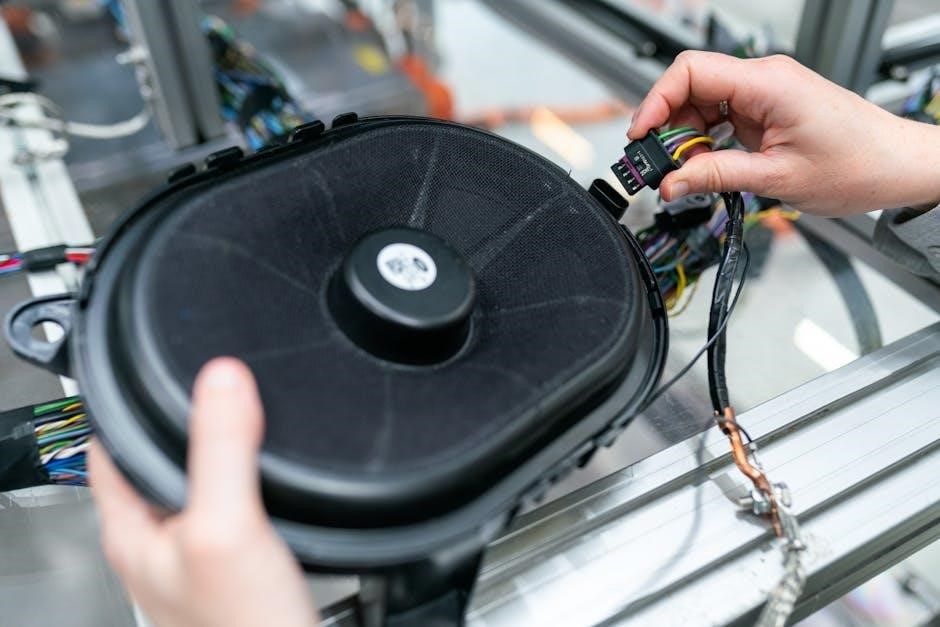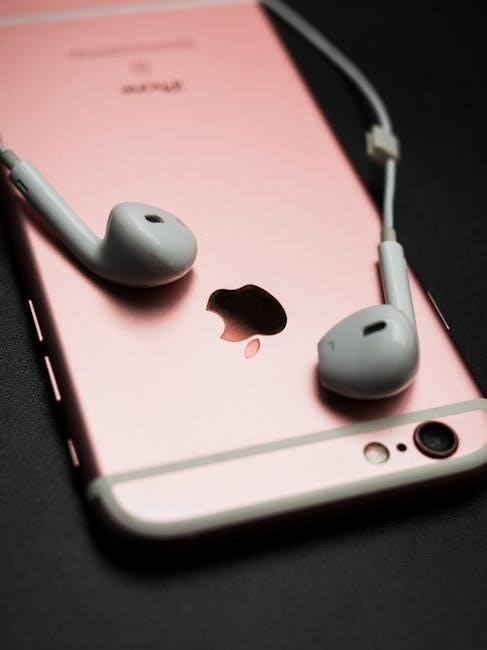Understanding speaker wire gauge is crucial for optimal sound quality, using
key factors
to determine the perfect gauge, ensuring a reliable connection between speakers and amplifiers, with pure copper wire recommended always online․

Understanding the Basics of Speaker Wire Gauge
To begin with, speaker wire gauge refers to the thickness of the wire, which is measured in AWG, or American Wire Gauge․ The lower the AWG number, the thicker the wire․ This is important because thicker wires can carry more power and have less resistance, resulting in better sound quality․ When choosing a speaker wire, it’s essential to consider the gauge, as it will impact the overall performance of the system․ A general rule of thumb is to use a wire with a gauge of 16 or lower for most applications․ Additionally, the type of wire is also crucial, with pure copper wire being the preferred choice due to its excellent conductivity․ By understanding the basics of speaker wire gauge, individuals can make informed decisions when selecting the right wire for their audio system, ensuring optimal sound quality and reliability․ Using the right gauge and type of wire can make a significant difference in the overall listening experience․

Factors to Determine the Perfect Speaker Wire Gauge
Key considerations include power handling, distance, and speaker impedance, using online resources to inform decisions, ensuring optimal sound quality and system performance always with proper wire selection methods․
Importance of Speaker Impedance and Distance
Speaker impedance and distance are critical factors in determining the perfect speaker wire gauge, as they directly impact the overall sound quality and system performance․ The impedance of a speaker is measured in ohms and is typically rated at 4, 6, or 8 ohms․ A higher impedance requires a thicker wire to ensure a reliable connection, while a lower impedance can use a thinner wire․ Distance also plays a significant role, as longer distances require thicker wires to minimize signal loss and ensure optimal sound quality․ Using online resources, such as wire gauge charts, can help inform decisions and ensure the correct wire is selected for the specific application․ By considering these factors, individuals can make informed decisions and choose the perfect speaker wire gauge for their system, resulting in optimal sound quality and performance․ Proper wire selection is essential for a reliable connection between speakers and amplifiers․

Choosing the Right Wire Thickness
Using a wire thickness of 14AWG is recommended for most applications, providing a balance between cost and performance, with pure copper wire being the preferred material for optimal sound quality always online․
Recommendations for Different Scenarios
When it comes to choosing the right speaker wire gauge, different scenarios require different approaches․ For example, in a home theater setup, a thicker wire gauge such as 12AWG or 10AWG may be necessary to handle the high power requirements․ On the other hand, for a simple stereo setup, a thinner wire gauge such as 16AWG or 18AWG may be sufficient․ It’s also important to consider the distance between the speakers and the amplifier, as longer distances require thicker wire gauges to minimize signal loss․ Additionally, the type of speaker and amplifier being used can also impact the choice of wire gauge․ For instance, high-end speakers may require a higher quality wire with a thicker gauge to ensure optimal sound quality․ By considering these factors, individuals can make informed decisions when selecting the right speaker wire gauge for their specific needs․ Using online resources and consulting with experts can also provide valuable insights and recommendations for different scenarios․

Speaker Wire Gauge Charts
Speaker wire gauge charts provide a useful reference for determining wire size, using tables and
- lists
to organize data and facilitate informed decisions online always․
Using Charts to Determine Wire Size vs Speaker Impedance
Speaker wire gauge charts are essential tools for determining the appropriate wire size based on speaker impedance and distance․ These charts typically provide a table or graph that outlines the recommended wire gauge for different speaker impedance levels and distances․ By referring to these charts, users can easily determine the optimal wire size for their specific setup, ensuring reliable and high-quality sound transmission․ The charts take into account various factors, including the speaker’s ohm rating and the distance between the amplifier and speakers․ Using these charts, individuals can make informed decisions when selecting speaker wire, avoiding potential issues such as signal loss or degradation․ Additionally, the charts often provide guidelines for different scenarios, such as home theaters or live sound applications, making it easier to choose the right wire size for the job․ Overall, speaker wire gauge charts are invaluable resources for anyone looking to optimize their sound system’s performance․
Properly choosing speaker wire gauge ensures optimal sound quality, using online resources and
guides
to make informed decisions always matters online daily․
Final Considerations for Choosing the Perfect Speaker Wire Gauge
When selecting a speaker wire gauge, it is essential to consider the overall system design and intended use․ The type of speakers, amplifier power, and listening environment all play a role in determining the ideal gauge․ Additionally, the length of the wire run and the presence of any potential signal degradation factors, such as noise or interference, should be taken into account․ By carefully evaluating these factors and using online resources, such as wire gauge calculators and expert recommendations, users can make informed decisions and choose the perfect speaker wire gauge for their specific needs․ This will help to ensure optimal sound quality, reliable performance, and a enjoyable listening experience․ Using a wire gauge guide can also help to simplify the process and provide a clear understanding of the different gauge options and their applications․ Properly choosing a speaker wire gauge is crucial for achieving the best possible sound quality․